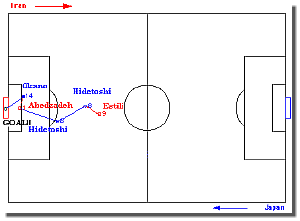Conclusion
Japan's System of Play / Shots On Goal
Firstly Japan employed an interesting system of play in the game. Only two players remained at the center of the defense almost the whole game. The two wing fullbacks were used to spread the attack and covered ground from their own defensive third up to the Iran penalty area.
Japan packed the middle of the field with three players who operated around the center circle and the team used three forward in this do-or-die game.
Okada used three substitutes during the game and all three played up front. He will probably claim that the substitution he made to bring on Masayuki Okano #14 in the extra time was his shrewdest.
Japan's
System of Play
|
|
Japan's
Shots On Goal
|
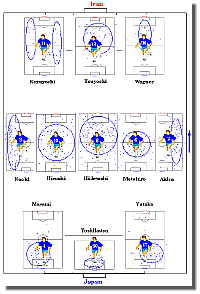
|
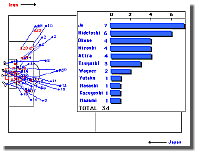
|
|
Click on the images above to enlarge

|
|
The One-Two Mid Field Punch of Hidetoshi & Hiroshi
Observing The GOLDEN GOAL ,the player whose shot on Goal was ultimately saved by Iran goalkeeper was mid fielder Nakata Hidetoshi #8. Hidetoshi with his colleague Nami Hiroshi #10 were undoubtedly the most impact players on the Japanese team. This one-two mid field punch could be the combination that could help Japan squeak into round two in France. Hidetoshi #8 in particular had an impressionable game against Iran as you can see by The player performance charts.
|
Nakata Hidetoshi #8
Performance Summary
|
Nami Hiroshi #10
Performance Summary
|

|
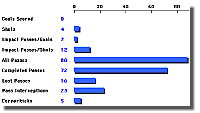
|
|
Click on the images above to enlarge

|
|
Hidetoshi #8 had a total of 18 impact passes which led to shots on Goal along with a total of 6 direct shots on goal. He not only set up the winning Goal but made 112 passes total with a 68% completion rate, fully more than anyone else ! Note that Hidetoshi was involved in two of the three goals.
Japan also benefited from a workmanlike performance from Hiroshi #10. He completed fully 72 of his 88 passes during the game . The charts point out that Hiroshi was the next best productive Japanese player with a total of 12 impact passes which led to shots on Goal and 8 direct shots on goal.
|
Completed/Lost Passes
Completion Rate
|
Japan's
Player Ranking
|
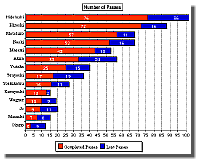
|
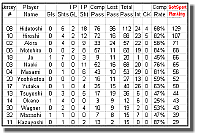
|
|
Click on the images above to enlarge

|
The above charts include a Japan Player Ranking chart which provides a ranking of all the Japan players (by thier performances) in desending order. This chart provides all statistics on each individual player including shots, goals, passes, impact passes, etc. Impact passes are passes which led to shots on goal or passes which led to the goals themselves..
Conclusion
So in summary what can we expect from Japan in France? The team scored 10 goals in its last three games to qualify so it might be fair to conclude that the team will continue to be offensive minded.
One question though, is it easier to think "offense" against a team such as Iran than it is against a world power such as Argentina? Part of the joy of soccer is that these psychological elements come into play... especially when the whole world is watching.
Your regarding Coaches Corner are welcome.
A P P E N D I X
Figure 1
return to article
Japan's Goal - Trace Back 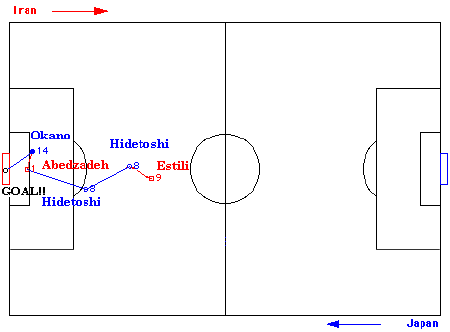


This chart shows the sequence of passes which led to the score of the GOLDEN GOAL.
Figure 2
return to article
Japan's System of Play 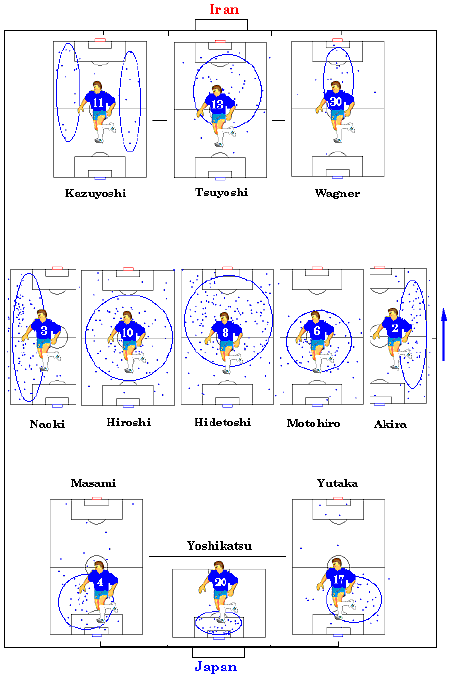


This chart shows Japan's system of play.
Each blue dot represents each time the individual Japan player touched the ball on the field during the entire game (ie Player Range).The blue oval shows in clearity the area the player concentrated his play.
Figure 3
return to article
Japan's Shots on goal 

Figure 4
return to article
Hidetoshi # 8 Player Performance 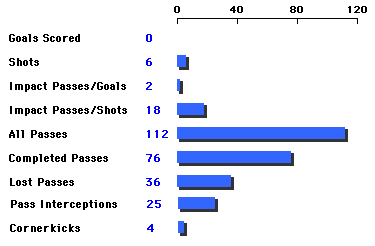

Figure 5
return to article
Hiroshi #10 Player Performance 

Figure 6
return to article
Completed/Lost passes-Completion rate 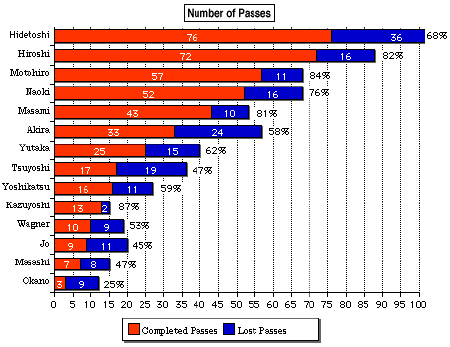

Figure 7
return to article
Japan Player Ranking 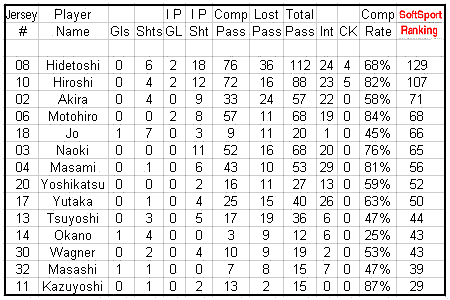


Copyright © 1994-97 FIFA. All rights reserved.
Copyright © 1997 En-Linea, Inc. All rights reserved.



